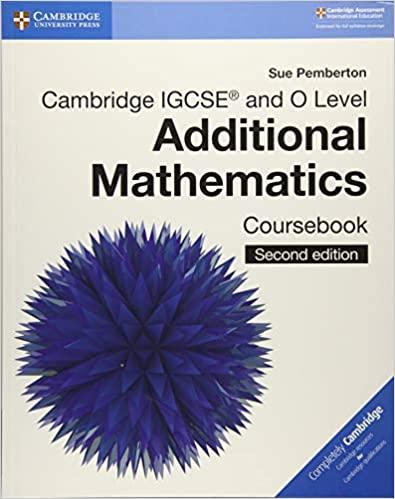Question
A researcher sets out candy in an office. Every person who passes by is observed to see if she or he takes a piece of
A researcher sets out candy in an office. Every person who passes by is observed to see if she or he takes a piece of candy or not. The researcher reports:Pcandy= .35, 95% CI [.20, .57]. What is the best statement about the study?
In this sample, the majority of participants took candy.
For the population, it is plausible that all of the participants would take candy.
For the population, it is plausible that as few as 10% of participants would take candy.
In this sample, the CI was on the population proportion.
2.
For the research results cited above, each of the following conclusions, according to the NHST approach, is trueexcept
given the null hypothesis that Pcandy= .50, the results would be a statistically significant finding.
given the null hypothesis that Pcandy= 0, the results would be a statistically significant finding.
given the null hypothesis that Pcandy= .15, the results would be a statistically significant finding.
given the null hypothesis thatPcandy= .60, the results would be a statistically significant finding.
3.
The formula for a proportion is
4.
To calculate the CI on the difference between two proportions, they must be
equal.
independent.
heterogeneous.
random.
5.
In a hypothetical study, a mental-health screening was administered to 100 men and 100 women. Among the men, 10 met the criteria for clinical depression (Pmen_depressed= .10). Among the women, 20 met the criteria (Pwomen_depressed= .20). The difference, expressed as proportions, was Pwomen_depressedPmen_depressed= .1, 95% CI [.01, .20].
Based on this analysis,
in the population, it is plausible that women are anywhere from no more likely to be depressed to substantially more likely to be depressed than men are.
one would be justified in drawing causal conclusions about gender and depression.
the study should be immediately repeated.
in the NHST approach, given the null hypothesis that Pwomen_depressedPmen_depressed= 0, this would be a statistically significant finding.
6.
In the NHST approach, researchers typically examine the difference between two proportions using a(n) ________ analysis.
r2
2(chi-square)
2(eta squared)
s2
7.
In statistics,riskis
associated only with outcomes that have high probability.
the probability that a particular outcome will occur.
always 0.
a wager or gamble.
8.
To help ensure that others understand one's results, it is a good practice to express differences in risks in terms of
ratios ("For every person with a risk of heart attack, there are four without risk").
proportions ("Those at the risk of heart attack are a third").
frequencies ("There are 45 people with a risk of heart attack and 15 without a risk").
percentages (for example, "The risk of heart attack was reduced by 4 percentage points").
9.
When reporting proportions
use a leading zero for the first proportion but no leading 0 after that (e.g.,P= 0.10 for men butP= .10 for women).
If a value can never exceed 1.0, don't use a leading zero, because proportions range only from 0 to 1 (e.g.,P= .10).
always convert them to percentages.
If the value has the potential to exceed 1.0, always use a leading zero (e.g., P = 0.10).
10.
Frequencies are always used when the data are measured on a(n) ___________ scale.
nominal
ordinal
ratio
interval
Step by Step Solution
There are 3 Steps involved in it
Step: 1

Get Instant Access to Expert-Tailored Solutions
See step-by-step solutions with expert insights and AI powered tools for academic success
Step: 2

Step: 3

Ace Your Homework with AI
Get the answers you need in no time with our AI-driven, step-by-step assistance
Get Started


